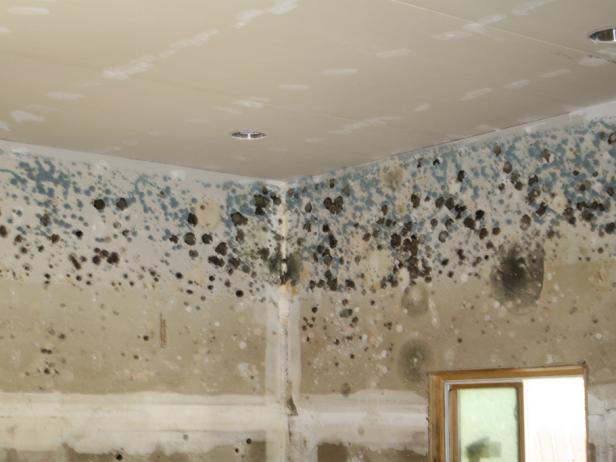Black mold (Stachybotrys chartarum) is a toxic mold that can lead to severe and the long term effects of black mold lead to long-lasting health problems. It is not as  commonly found as other household molds. It can still be found indoors and appears as a greenish black mass. It will feel slimy and wet to touch and will appear powdery. This fungi thrives on substances that are high in cellulose such as paper, gypsum board, lint, fiberboard, and wood.
commonly found as other household molds. It can still be found indoors and appears as a greenish black mass. It will feel slimy and wet to touch and will appear powdery. This fungi thrives on substances that are high in cellulose such as paper, gypsum board, lint, fiberboard, and wood.
Mold spores travel through air and thrive on surfaces that have moisture. They can be in homes and offices and schools without anyone knowing about the existence of the mold, which is why it is important to know the symptoms of black mold exposure. The latest research has found connections between long term exposure to mold and a diverse range of health problems for which we did not know the causes before. There are a variety of diseases and long term effects of black mold that are caused by fungi. These are:
- Respiratory infections
- Bronchitis (lung infection)
- Balkan nephropathy (disorder of the kidney)
- Reye’s syndrome (causes brain and liver swelling)
- Hepatocellular carcinoma (cancer in the cells of the liver)
- Kashin-Beck disease (disease of the joints and bones)
Black mold, especially is up to 40 times more toxic if inhaled than if ingested. Even if the black mold in the environment is not releasing toxins actively, people are still in danger. Exposure to black mold can cause:
- Cold and flu
- Headaches
- Sore throat
- Memory loss
- Muscle aches
- Fatigue
- Autoimmmune disease
- Rashes and dermatitis
- Asthma
- Nosebleeds
- Pulmonary hemorrhage
- Disease that is similar to emphysema
- There are possibilities that SIDS (Sudden Infant Death Syndrome) can be caused by long-term exposure to black mold.
- In infants, vomiting and diarrhea
In fact, mold can be far more lethal than even heavy metals when there is exposure. Fungi can mutate rapidly and sidetrack your immune system, while also preventing your immune system from working, which is a deadly double-pronged approach.
People who are already having sensitivities and allergies will be even more susceptible to mold and have more severe symptoms of black mold exposure. If a person smells mold, it can directly impact the brain, so sinusitis caused by mold can even cause brain infections that are serious.
If caught early, mold exposure can be treated effectively. For this, it is important to know what black mold exposure symptoms are. Knowing these and looking out for them can be potentially lifesaving. If identified, it would be best to see a physician immediately and get the environment cleaned to eliminate all toxic black mold. These black mold exposure symptoms are:
- Fits of sneezing
- Irritation of the eyes, such as water, red, or itchy eyes
- Cough
- Irritation of the throat
- Chest tightness
- Difficulty breathing
- Wheezing
- Stuffy nose
- Skin irritation
In infants, the symptoms are related to the respiratory system, which could be a cough or a wheeze that does not go away, no matter what the treatment.

